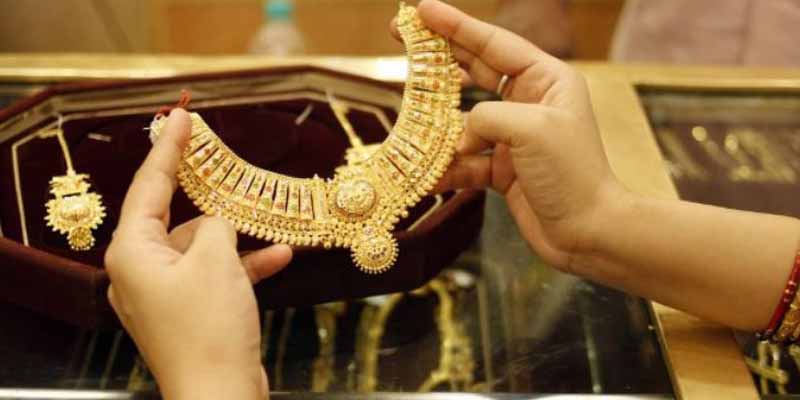- India
- Jun 16
Mandatory gold hallmarking comes into force
• Mandatory hallmarking of gold jewellery and artefacts came into force on June 16 in a phased manner and initially will be implemented in 256 districts of the country.
• A decision in this regard was taken after a meeting chaired by Consumer Affairs Minister Piyush Goyal with industry stakeholders.
• The Centre said no penalty will be imposed till August on those who do not comply with the mandatory hallmarking of gold jewellery and artefacts.
• However, action will be taken on consumer complaints as per the law.
What is hallmarking?
• Hallmarking is the accurate determination and official recording of the proportionate content of precious metal in jewellery/artefacts or bullion/coins.
• Hallmarks are marks used in many countries as a guarantee of purity or fineness of precious metal articles.
• The BIS Hallmarking Scheme has been aligned with international criteria on hallmarking. As per this scheme, ‘Registered’ is granted to the jewellers by BIS under Hallmarking Scheme. The BIS certified jewellers can get their jewellery hallmarked from any of the BIS recognised Assaying and Hallmarking (A&H) centres. The recognition of an Assaying and Hallmarking Centre is done against IS 15820:2009.
• The main objectives of the Hallmarking Scheme are to protect the public against adulteration and to obligate manufacturers to maintain legal standards of fineness.
• In India, at present two precious metals — gold and silver — have been brought under the purview of hallmarking.
• The annual consumption of gold which was estimated at 65 tonnes in 1982, has increased to over 800 tonnes presently.
• About 80 per cent is for jewellery fabrication (mainly 22 carat purity) for domestic demand, 15 per cent for investor demand and barely 5 per cent for industrial use.
• According to a FICCI study, the gold processing industry has around 15,000 players, with around 80 units having revenues over $5 million. India is also home to around 4,50,000 goldsmiths, over 100,000 gold jewellers, along with about 6,000 diamond-processing players and 8,000 diamond jewellers.
• Hallmarking of gold jewellery was started by BIS in April 2000 to provide third party assurance to consumers on the purity of gold jewellery or its fineness.
• The scheme for hallmarking of silver jewellery/artefacts was launched in October 2005.
• Under the scheme, while the jewellers are granted registration to sell hallmarked jewellery, Assaying & Hallmarking (A&H) centres are recognised to assay the purity of the jewellery submitted by the registered jeweller, along with declaration of purity and to apply hallmark on such jewellery which is found conforming to relevant Indian standard including declared fineness.
• Around 40 per cent of gold jewellery is being hallmarked currently.
• The government said there has been a 25 per cent increase in A&H centres to 945 from 454 in the last five years. Presently, 940 A&H centres are operative. Out of this 84 centres have been set up under the government subsidy scheme in various districts.
• About 14 crore articles can be hallmarked in a year with the existing capacity of these centres.
Highlights of mandatory hallmarking:
• In November 2019, the government had announced that hallmarking of gold jewellery and artefacts would be made mandatory across the country from January 15, 2021. But the deadline was extended for four months till June 1 and later till June 15 after the jewellers sought more time in view of the pandemic.
• Out of 715-odd districts in the country, mandatory hallmarking of gold jewellery and artefacts has come into force in 256 districts across the country.
• Rest of districts will be included in two phases. In the second phase, another 240-odd districts may be mapped that are in the 100 km radius of the first phase districts after infrastructure is in place.
• Also, mandatory hallmarking of 20, 23, and 24 carats gold jewellery will be implemented in a phased manner, for which BIS is framing quality standards.
• The government said it has exempted mandatory hallmarking gold on watches, fountain pens and special types of jewellery like Kundan, Polki and Jadau.
• Jewellers can continue to buy back old gold jewellery without a hallmark from consumers. Old jewellery can be hallmarked, if feasible by the jeweller after melting and making new jewellery.
• The mandatory hallmarking will protect the public against lower caratage and ensure consumers do not get cheated while buying gold ornaments and get the purity as marked on the ornaments.
• The government said the hallmarking of jewellery/artefacts is required to enhance the credibility of gold jewellery and customer satisfaction through third party assurance for the marked purity/fineness of gold, and consumer protection.
Manorama Yearbook app is now available on Google Play Store and iOS App Store

